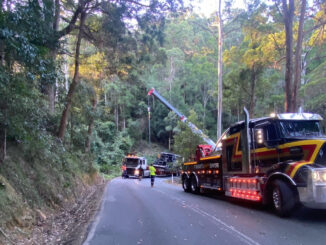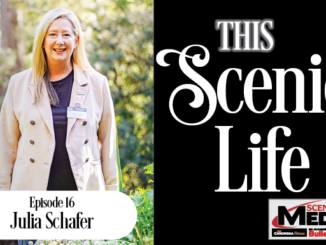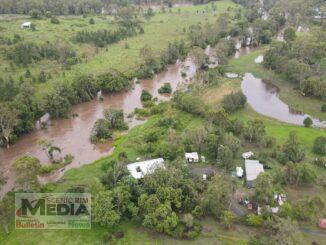
CULTURAL burning is helping foster local relationships and nurture the land.
The Mununjali Men’s Group, Maibin Jahyilah Yahgilah Inc, organised a traditional burn at Snake Ridge in Lamington National Park, on Wangerriburra Country, in a joint exercise with Queensland Parks and the Firesticks Alliance on August 8.
It was the third day of workshops in the region with Victor Steffensen from Firesticks.
It rounded out a traditional burn training program which ran over two years through state and federal bushfire recovery funding secured by Dale Anderson from the men’s group.
The training program covered fire science, behaviour, fire ecology and fire in the Australian landscape, traditional reading of country (seasons, plants, animals and weather), strategic, operational and tactical fire ground planning, forest ecology plant and tree identification, practical fire planning, permits, safety and preparation and traditional burn practice.
Dale, a Kurnai man and retired scientist and farmer with experience in burning country, said he and Mununjali man Germaine Paulson selected locations for the workshops.
“I also called my friend Wil Buch (Lamington National Park Ranger in Charge) and suggested a joint burn to build relationships with parks, this had never been done before,” he said.
“It was in my opinion the most surreal and culturally significant burn I’ve ever experienced, the fire was slow and cool. All of us moved in and about and through and over the fire as it burned, we were part of the fire, we cleaned debris from significant trees, we laughed and yarned, rangers and mob, listened and learned, all the while right in and on the fire ground. We became part of the fire itself and the country sang its fire song to us and spoke to it.”
“The fire was on a site that is destined to be used as a bristle bird release location from the captive breeding program, and the objectives for parks were to sure up and push back the rainforest the boundary between the open sclerophyll forest high grassland and the encroaching invasive rainforest (in the absence of fire the rainforest takes over country and the land loses its original landscape).”
Wil said it was a privilege to be involved.
“Both Indigenous cultural burning and Queensland Parks and Wildlife Services ecological burning share many of the same principles, such as burning at times of high moisture (in both the fuel and the soil profile), low intensity burning where possible and aiming to achieve a mosaic of burnt and unburnt areas in order to provide unburnt refuges for plants and animals, help prevent excessive erosion following rain and promotes over all biodiversity and recovery,” he said.
“The cultural burn provided a fantastic opportunity for Lamington rangers to get to know and build relationships with local mob through yarning and shared experience.”
“It was all about building a level of trust and respect on both sides and demonstrating that we are willing to learn their ways with the view that there is room in the fire space for both traditional and modern fire management practices.”





